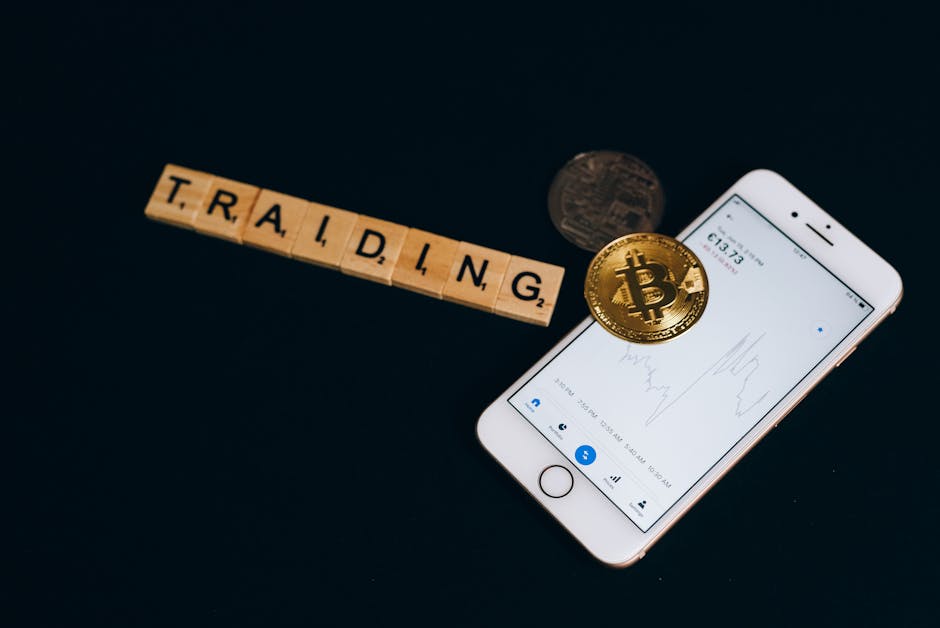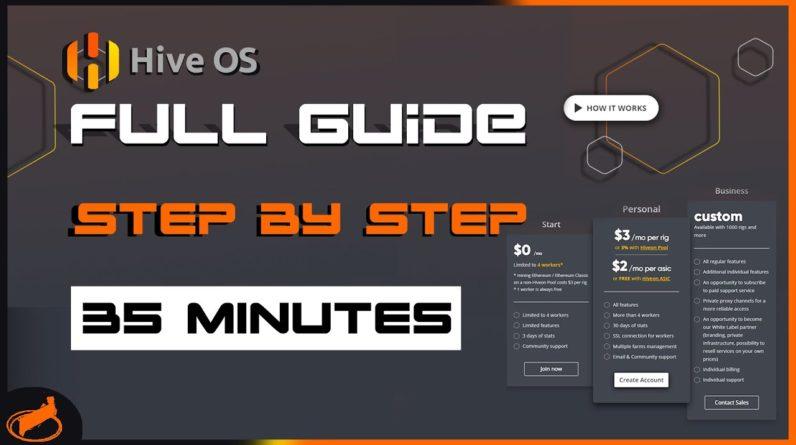What is Bitcoin mining? Does it mean I can generate
free Bitcoin from my computer? Is it still profitable to
mine Bitcoin these days? Well, stick around… Here on Bitcoin Whiteboard Tuesday, we’ll answer these questions and more. Bitcoin was created as
a decentralized alternative to the banking system. This means that the system
can operate and transfer funds from one account to the other without any central authority. With a central authority, transfering money is easy: Just tell the bank you want to remove
$50 from your account and add it to someone else’s account.
In this case, the bank has all the power, since the bank is the only one
who is allowed to update the ledger that holds the balances of
everyone in the system. But how do you create a system
that has a decentralized ledger? How do you give someone
the ability to update the ledger without giving them so much power that they will become corrupt
or negligent in their work? Well the rules of the Bitcoin system,
known as the protocol solves this in a very creative way
I like to call “Who Wants to Be a Banker?” In short, anyone who wants to participate in
updating the ledger of Bitcoin transactions, known as the blockchain, can do so.
All you need to do is guess a random number that solves
an equation generated by the system. Sounds simple, right? Of course this guessing
is all done by your computer. The more powerful of a computer you have, the more guesses you can make per second, thus increasing your chances of
winning this game. If you managed to guess right – you earn Bitcoins and get to write
the “next page” of Bitcoin transactions on the blockchain. Here’s a more detailed breakdown of
the mining process: Once your mining computer
comes up with the right guess, your mining program determines
which of the currently pending transactions will be grouped together into
the next block of transactions. Compiling this block
represents your moment of glory as you have now become
the temporary banker of Bitcoin who gets to update
the Bitcoin transaction ledger known as the blockchain.
The block you’ve created,
along with your solution is sent to the whole network
so other computers can validate it. Each computer that validates your solution updates its copy of
the Bitcoin transaction ledger with the transactions that
you chose to include in the next block. As you can imagine, since mining is based on
a form of guessing; for each block,
a different miner will guess the number and be granted the right to
update the blockchain.
Of course the miners with
more computing power will succeed more often, but due to the laws of
statistical probability, it is highly unlikely that
the same miner will do so every time. After this stage is complete, the system generates
a fixed amount of Bitcoins and rewards them to you as a compensation for the time and energy
you spent in solving the math problem.
Additionally, you get paid
any transaction fees that were attached to the transactions
you inserted into this block. So that’s Bitcoin mining in a nutshell. It’s called mining
because of the fact that this process helps “mine”
new Bitcoins from the system. But if you think about it,
the mining part is just a by product of the transaction verification process. So the name is a bit misleading, since the main goal of mining
is to maintain the ledger in a decentralized manner.
Now that you know what Bitcoin mining is you might be thinking
“cool! Free money! So where do I sign up?”
Well, not so fast…. Satoshi Nakamoto, who invented Bitcoin, crafted the rules for mining in a way that
the more mining power the network has, the harder it is to guess the answer
to the mining math problem. So the difficulty of the mining process is actually self adjusting to
the accumulated mining power the network possesses. If more miners join,
it will get harder to solve the problem; If many of them drop off,
it will get easier. And this is known as
the mining difficulty. So why on earth did Satoshi do this? Well, he wanted to create
a steady flow of new Bitcoins to the system. In a sense, this was done to
keep inflation in check. The mining difficulty is set
so that on average a new block will be added
every 10 minutes. Now remember, this is on average. We can have two blocks being added
minute after minute and then wait an hour for the next block. In the long run this will
even out to 10 minutes on average.
As you can imagine, this type of self adjusting mechanism
created some sort of an “arms race” to get the most efficient
and powerful miners as soon as possible. When Bitcoin first started out
there weren’t a lot of miners out there. In fact, Satoshi,
the inventor of Bitcoin, and his friend Hal Finney
were some of the few people mining Bitcoin back at the time
with their own personal computer. Using your CPU, meaning your Central Processing Unit
or your computer’s brain, was enough for mining Bitcoin back in 2009
since the mining difficulty was low. As Bitcoin started to catch on people looked for
more powerful mining solutions. Gradually people moved to GPU mining. A GPU or Graphics Processing Unit is a special component added to computers
to carry out more complex calculations. GPUs were originally intended to allow gamers to run computer games
with intense graphics requirements. Because of their architecture they became popular
in the field of cryptography and around 2011 people also started
using them to mine Bitcoins.
For reference, the mining power of
one GPU equals that of around 30 CPUs. Another evolution came later on
with FPGA mining. FPGA is a piece of hardware
that can be connected to a computer in order to run a set of calculations. They are just like a GPU,
but 3 to 100 times faster. The downside is that
they are harder to configure, which is why they weren’t
as commonly used in mining as GPUs. Finally, around 2013
a new breed of miner was introduced – the ASIC miner. ASIC stands for
Application Specific Integrated Circuit, and these were pieces of hardware manufactured solely for
the purpose of mining Bitcoin. Unlike GPUs, CPUs and FPGAs
they couldn’t be used to do anything else. Their function was
hardcoded into the machines. ASIC miners are the current
mining standard. Some early ASIC miners
even appeared in the form of a USB but they became obsolete rather quickly. Even though they started out in 2013 the technology quickly evolved and new more powerful miners
were coming out every 6 months. After about 3 years of
this crazy tech race we’ve finally reach a technological barrier
and things have cooled down a bit.
Since 2016 the pace at which new miners
are released has slowed considerably. Now that you know what miners are, let’s talk a bit about mining pools. Assuming you’re just entering
the Bitcoin mining game, you’re up against some heavy competition. Even if you buy the best
possible miner out there you are still at a huge disadvantage compared to professional
Bitcoin mining farms. That’s why mining pools came to existence. The idea is simple – miners group together to form a “pool”. Meaning they combine their mining power
to compete more effectively. If the pool manages to
win the competition, the reward is spread out
between the pool members depending on how much mining power
each of them contributed. This way even small miners
can join the mining game and have a chance of earning Bitcoin, even though they get
only a part of the reward.
Today there are over a dozen large pools that compete for the chance to mine Bitcoin
and update the ledger. I know you might be thinking, “ok, all this theory stuff is very nice, but is Bitcoin mining
actually profitable today?” Well, the short answer is
“probably not”, the correct (and long) answer is
“it depends on a lot of factors”. When calculating
Bitcoin mining profitability there are a lot of things
you need to take into account. Let’s go over them quickly A Hash is the mathematical problem
the miner's computer needs to solve. The Hash Rate refers to
your miner's performance or how many guesses
your computer can make per second. Hash rate can be measured in
Mega hash per second (MH/s), Giga hash per second (GH/s), Terra hash per second (TH/s) and even Peta hash per second (PH/s).

This refers to
the number of Bitcoins generated when a miner finds the solution. This number started at
50 Bitcoins back in 2009 and is halved every 210,000 blocks,
about four years. The current number of Bitcoins
awarded per block is 12.5. The last block halving
occurred in July of 2016 and the next one will be in 2020. This is a number that represents
how hard it is to mine Bitcoins at a certain moment according to the amount of mining power
currently active in the system. How many dollars
are you paying per KiloWatt. You'll need to find out
your electricity rate in order to calculate profitability. This can usually be found
on your monthly electricity bill. The reason this is important
is because miners consume electricity – whether for powering up the miner
or for cooling it down as these machines can get really hot. Each miner consumes
a different amount of energy. You’ll need to find out the exact
power consumption of your miner before calculating profitability. This can be found easily with
a quick search on the Internet or through this list. Power consumption is measured in Watts. If you’re mining through a mining pool,
and you should, then the pool will take
a certain percentage of your earnings for rendering their service.
Since no one knows what Bitcoin’s price
will be in the future it's hard to predict if Bitcoin mining
will be profitable. If you are planning to convert
your mined Bitcoins in the future to any other currency, this variable will have significant impact
on your profitability. And finally #8 –
The Difficulty increase per year – This is probably the most important
and elusive variable of them all. The idea is that since
no one can actually predict the rate of miners joining the network, neither can anyone predict
how difficult it will be to mine in 6 weeks, 6 months
or 6 years from now.
In fact, in all the time Bitcoin has existed profitability has dropped
only a handful of times, even at times when the price
was relatively low. The last two factors are the reason that no one will ever be able to give
a complete answer to the question "is Bitcoin mining profitable?" Once you have all of these variables at hand you can insert them into
a Bitcoin mining calculator and get an estimate of how much Bitcoin
you will earn each month. If you can’t get a positive result
on the calculator it probably means you don’t have the right conditions
for mining to be profitable. I assume by now you pretty much know
if mining is for you or not. But you may have also heard about
other types of mining like cloud mining, mobile mining
or even web mining. Cloud mining means that
you do not buy a physical mining rig but rather rent computing power
from a mining company and get paid according to
how much mining power you own.
At first this sounds like
a really good idea, since you don't have to go through
all of the hassle of buying expensive equipment, storing it,
cooling it, and monitoring it. However, when you do the math it seems that none of these
cloud mining sites are profitable. Those that do seem profitable are usually scams that don't
even own any mining equipment, they are just elaborate Ponzi schemes that will end up running away
with your money. As a general rule of thumb I would suggest to avoid
cloud mining altogether. If you still want to pursue this path make sure to make the right calculations
before handing over any funds.
Some mobile apps
claim to mine Bitcoin on your phone. While in theory this is possible, due to the low processing power phones have
compared to ASIC miners you will probably end up draining
your phone’s battery much faster and make a very small
fraction of a Bitcoin in return. The apps that allow this,
act as mining pools for mobile phones and distribute earnings according to
how much work was done by each phone. Remember, mining is possible
with any old computer, it’s just not worth the electricity
wasted on it since the slower the computer, the smaller the chances of actually
getting some kind of reward.
Finally, somewhere around 2017
the concept of web mining came to life. Simply put, web mining
allows website owners to hijack, so to speak, their visitors’ CPU
and use them to mine Bitcoin. This means that a website owner can
make use of thousands of “innocent” CPUs in order to gain profits. However, since mining Bitcoins
isn’t really profitable with a CPU, most of the sites that utilize web mining
mine other coins instead. As of the release of this video over 20 thousand sites
have been known to utilize web mining.
The concept of web mining
is very controversial. From the site’s visitors’ perspective, someone is using their computer
without consent to mine Bitcoins. In extreme cases this can also
harm the CPU due to overheating. From the site owner’s perspective, web mining has become
a new way to monetize websites without the need for placing annoying ads. Also, the site owner can control
how much of the visitor’s CPU he wants to control in order to make sure he’s not
abusing his hardware. To conclude this episode of
Bitcoin whiteboard Tuesday, here are 3 Questions I get asked a lot: The first is
“Isn’t mining a waste of electricity?” While there’s been a lot of criticism
regarding the energy consumption that Bitcoin mining employs worldwide there are various arguments
against this claim as well.
For starters, you could say that Bitcoin mining ultimately
requires less resources than the current banking system. If you take into account banks, servers,
ATMs, credit card companies and all other components of
the current monetary system, you’ll find out that
it is much more wasteful than Bitcoin mining. Especially if you think about
all of the paper used for printing money and pollution caused by these institutions.
Also, you could say Bitcoin mining is actually optimizing power consumption
around the world. Many companies are moving
their mining operations to countries that have
an excess of electricity. This means that
the use of electricity worldwide is actually becoming more efficient. There are a lot of additional arguments
in favour of mining but I’ll leave you with these two for now. The second question I usually get is “Can’t Google start mining Bitcoin
and blow out the competition?” Yes it can, but it won’t do it much good. The reason is that Google’s servers aren’t fit for solving
the Bitcoin mining problem the same way that ASICs are. For reference, if Google harnesses all of its servers
to the sole purpose of mining Bitcoin, and abandons all other business operations, it will account for around
one one-thousandth of a percent of the total mining power
that the Bitcoin network currently has. And finally, Should I mine Bitcoins? Well now that you’ve about
finished watching this video you should be able to answer
this question yourself.
Keep in mind that sometimes there might be
better alternatives to Bitcoin mining in order to produce
a higher return on your investment. For example, depending on Bitcoin’s price it might be more profitable to just
buy Bitcoins instead of mining them. Another option would be
to perhaps mine altcoins which can still be mined with GPUs
like Ethereum, Monero or Zcash. This concludes this week’s episode of
Bitcoin Whiteboard Tuesday. Hopefully now you have a better
understanding of what Bitcoin mining is – the process of updating the ledger
of Bitcoin transactions incentivized with
the rewarding of new Bitcoins to those who participate.
You may still have some questions. If so, just leave them
in the comment section below. And if you’re watching
this video on YouTube, and enjoy what you’ve seen, don’t forget to hit the like button. Then make sure to subscribe
for notifications about new episodes. Thanks for joining me
here at the Whiteboard. For 99Bitcoins.com,
I’m Nate Martin, and I’ll see you… in a bit..



![[8GPU Mining Case] 8 X 3060 GPUS with two CPU, ETH Mining Rig Case 3060 Best Mining Motherboard X79 5 rootF IMG 626ad36770423](https://cryptomarkethq.com/wp-content/uploads/2022/04/rootF_IMG_626ad36770423.jpg)



